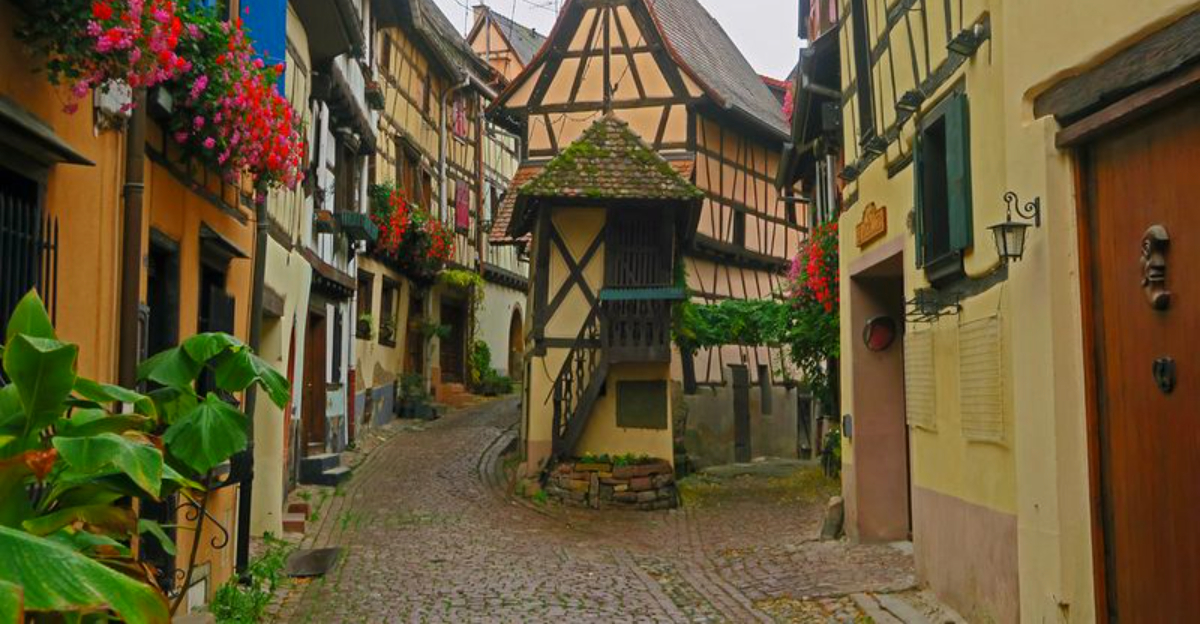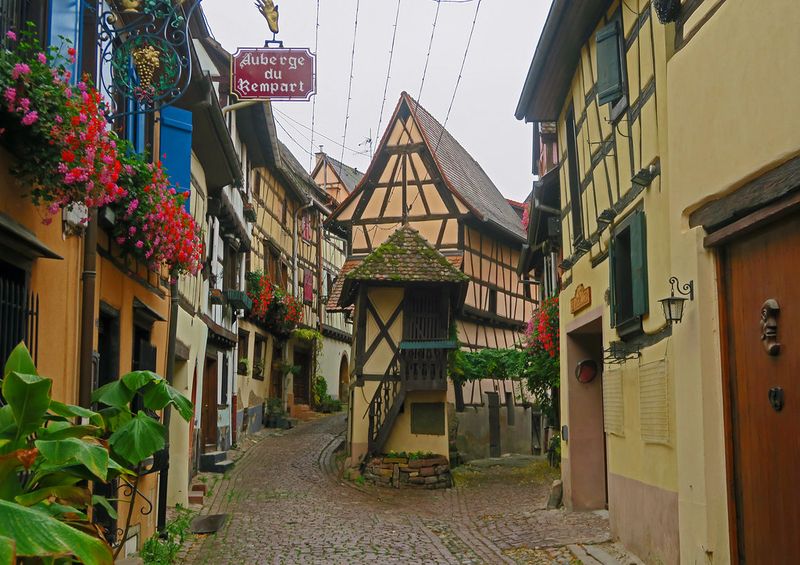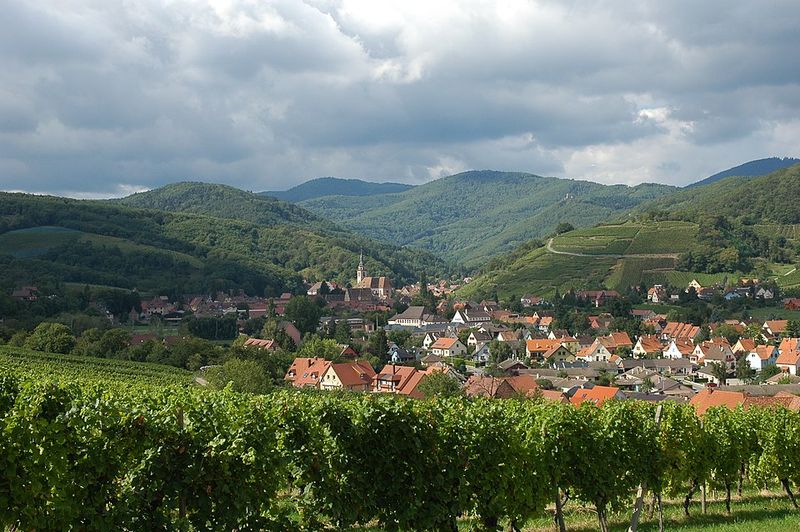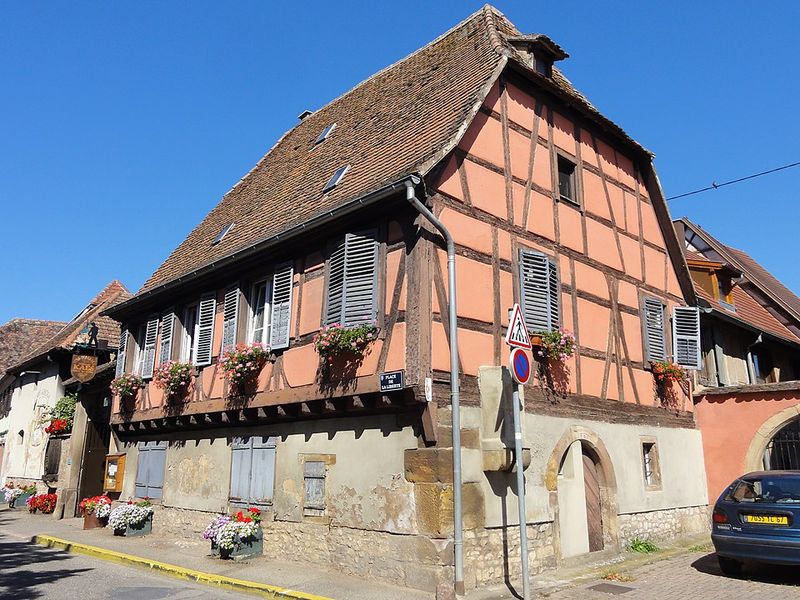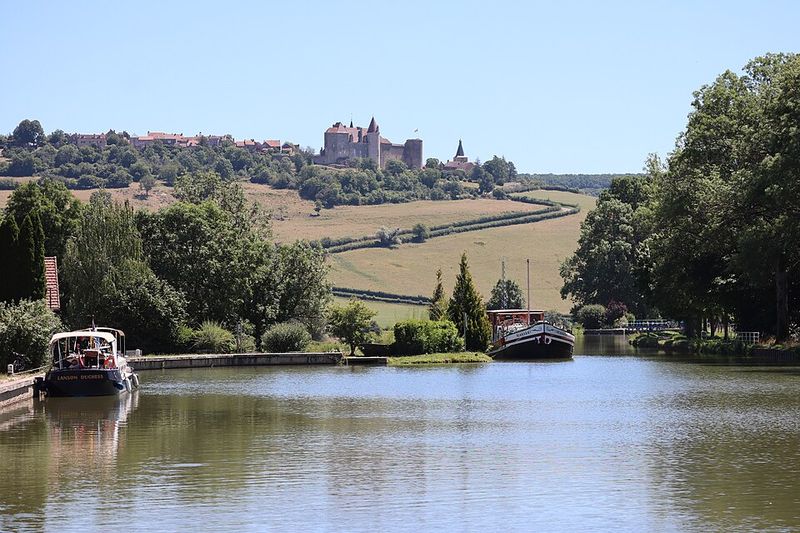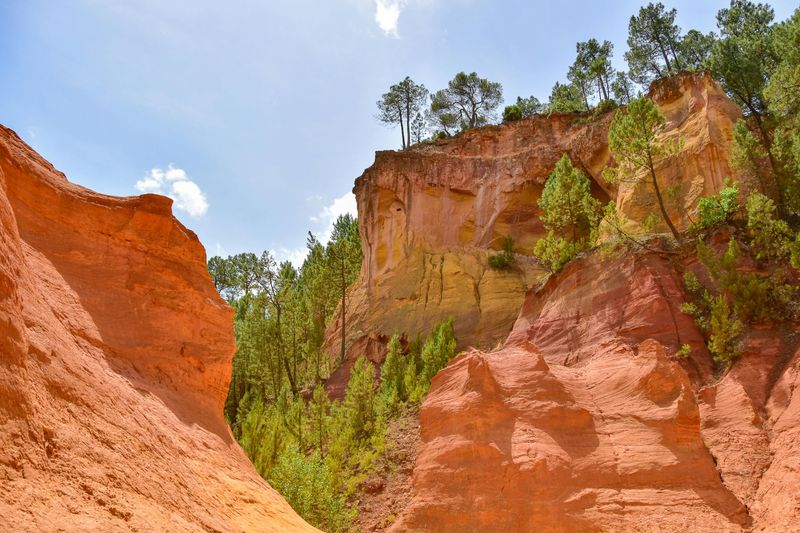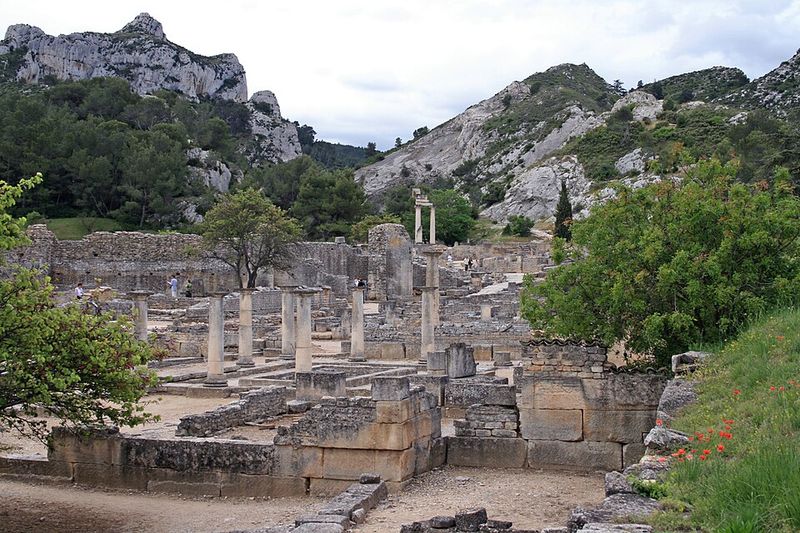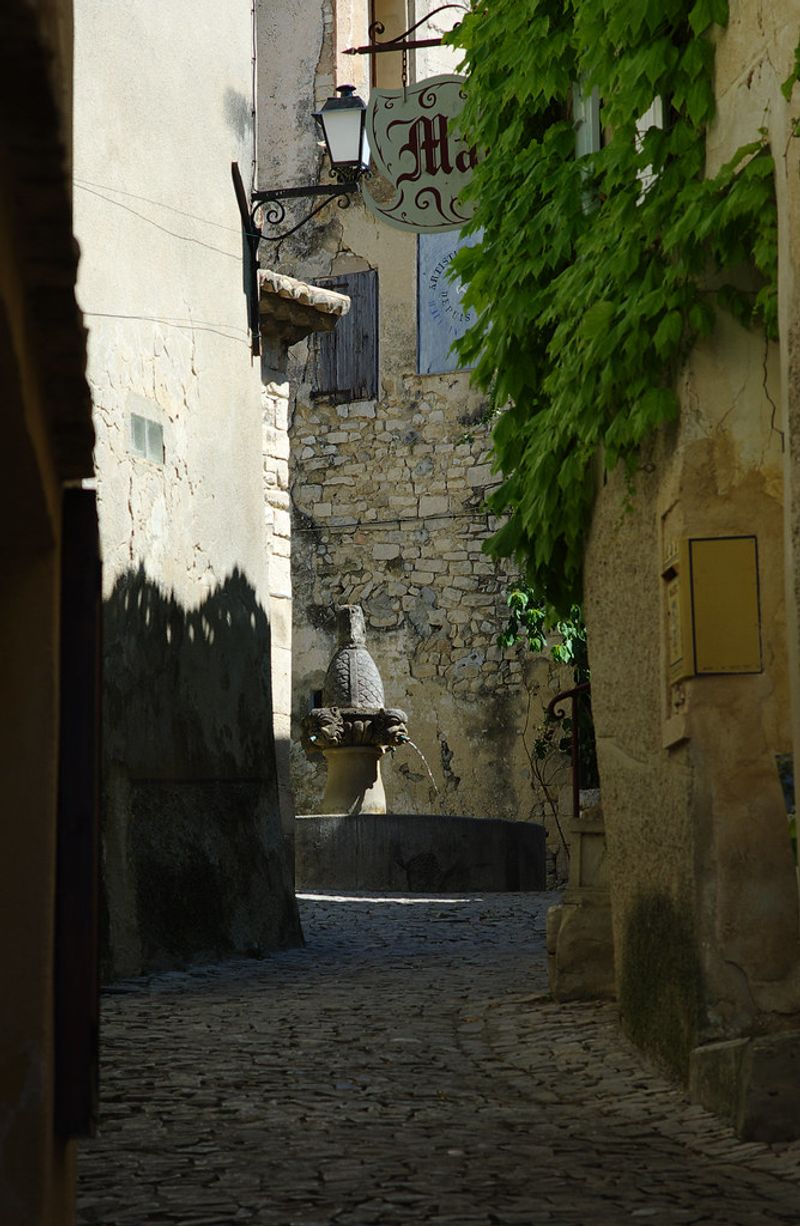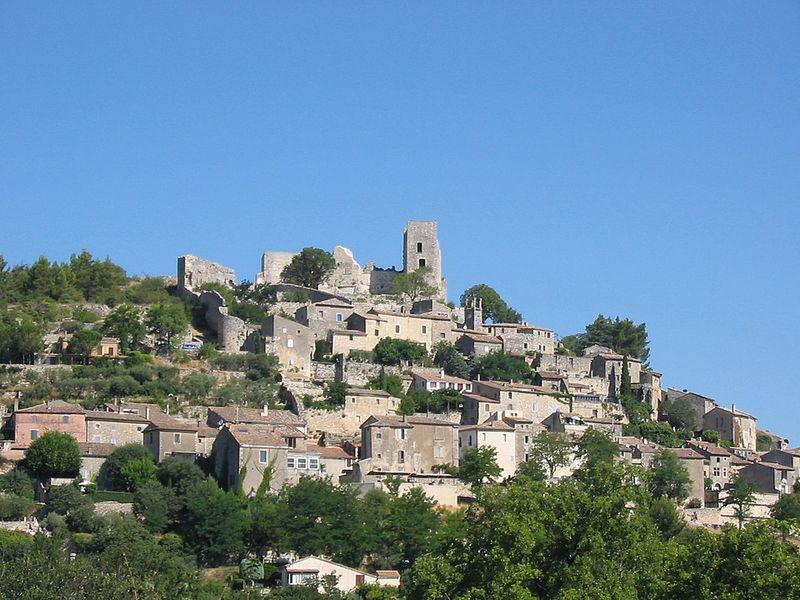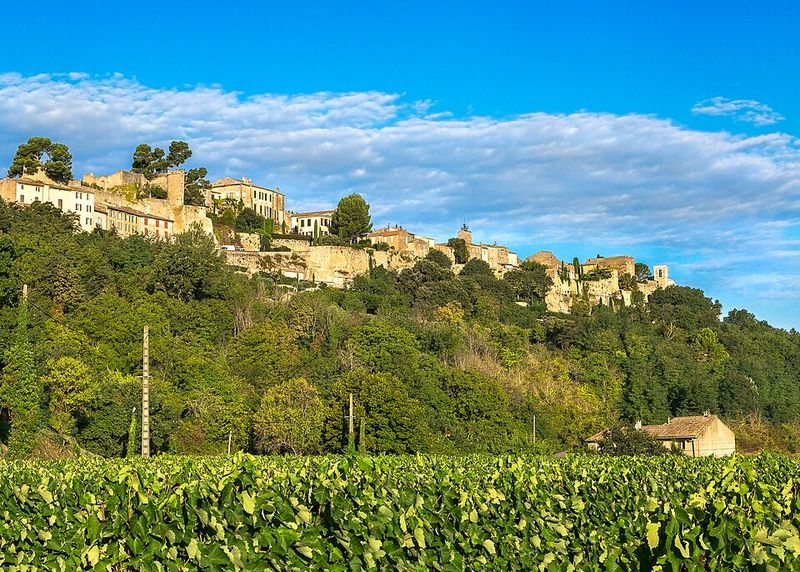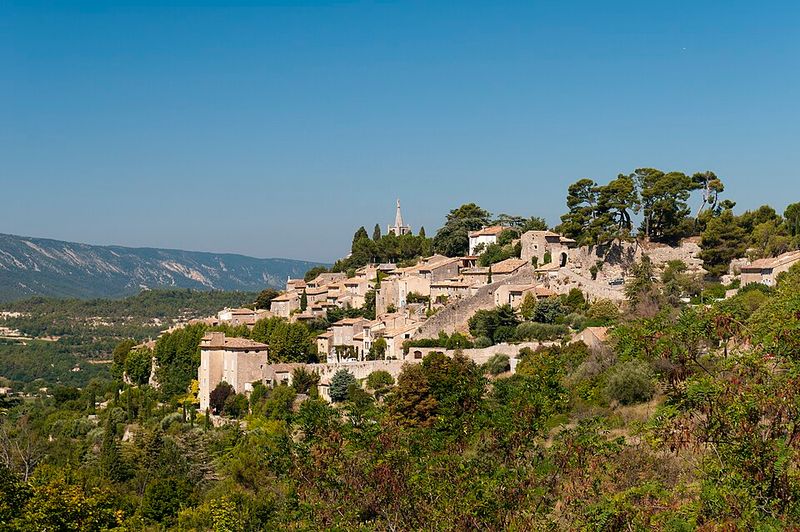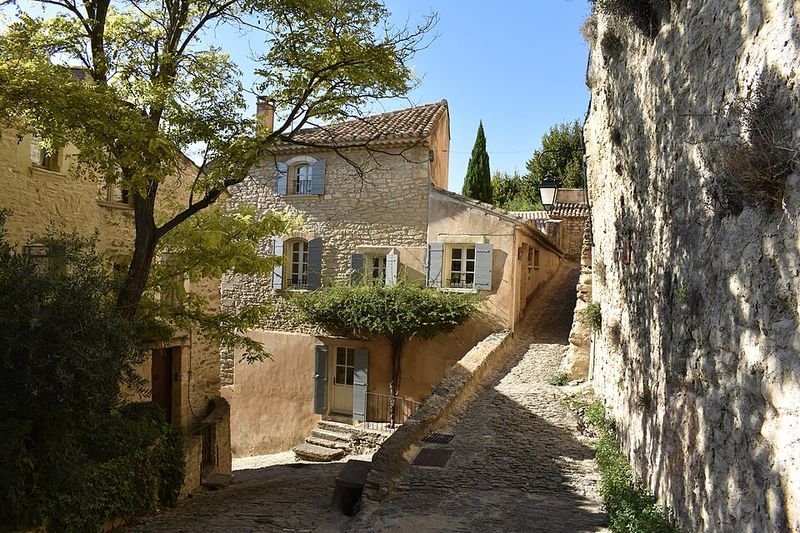Craving cobblestones, vineyards, and golden light without the crowds? Trace a cinematic route from storybook Alsace to sun‑washed Provence, discovering small towns where time slows and details shine. Expect half‑timbered lanes, Roman echoes, ochre cliffs, and market mornings perfumed with thyme and peaches. Pack curiosity and an appetite—each stop promises a sense of place you’ll want to linger in.
Eguisheim (Alsace)
Eguisheim spirals outward like a fairy tale, its concentric lanes wrapped in half-timbered houses and balconies spilling geraniums. The village’s circular plan encourages slow, unhurried wandering, revealing carved lintels, wine cellars, and intimate squares with tinkling fountains. Pause for a tasting of crisp Alsatian whites, then loop past the old ramparts to catch vineyard views and the Vosges beyond. Evening is when the pastel facades glow and shadows lengthen, inviting one more turn around the ring. Recognized as France’s favorite village in 2013, Eguisheim feels both cherished and lived-in, a balance of postcard beauty and everyday rhythm. Visit midweek to dodge tour groups, and bring comfortable shoes—cobbles reward careful steps. It’s small, but lingering reveals its layers.
Kaysersberg (Alsace)
Kaysersberg charms instantly with its storybook bridge over the Weiss River, timbered facades leaning toward water, and a hillside castle ruin keeping watch. Follow the gentle climb to the fortress for a panorama of vine-striped slopes and tiled roofs; then descend for kugelhopf or tarte flambée in a snug winstub. The town’s lanes reveal iron shop signs, oriels, and courtyards perfumed by fermenting grapes in harvest season. Visit during golden hours when the river mirrors painted beams and flower boxes. Crowned France’s favorite village in 2017, Kaysersberg balances fame with authentic pace—especially after day-trippers depart. Nearby walking paths thread through vineyards, ideal for sunset strolls. Expect convivial markets, a soft clink of glasses, and a sense that medieval bones still shape modern conviviality.
Riquewihr (Alsace)
Riquewihr is a jewel tucked inside medieval walls, where every street seems borrowed from an illuminated manuscript. The Dolder Tower marks your entry to lanes lined with vividly painted beams, carved wine emblems, and inviting tasting rooms. Vineyards press close, reminding you that Riesling and Gewürztraminer are the lifeblood here; a short walk beyond the ramparts folds you into green rows and birdsong. Arrive early to savor the quiet before souvenir shops stir, then linger for a cellar tour beneath creaking timbers. Photographers love the angles—gable to gable, window to slate roof—especially after rain, when stones deepen in tone. While popular, Riquewihr rewards patience with hidden courtyards and family-run cafés. It’s tiny, colorful, and—when unhurried—profoundly atmospheric.
Andlau (Alsace)
Andlau whispers rather than shouts, a tranquil Alsatian village tucked against the Vosges foothills and wrapped in vines. Its Romanesque abbey church anchors a network of lanes where timbered facades are less showy, more lived-in. Walk to the edge of town and the hills rise steeply, laced with forest trails and ruined keeps that deliver sweeping valley views. Tastings here feel personal, with vintners eager to discuss terroir and vintage quirks without rushing you. The pace is slow, the birdsong constant, and the baker’s window irresistible. Even at mid-day, Andlau keeps crowds at arm’s length, making it a peaceful base for hikes and wine road forays. Come for quiet, stay for character, and leave with a newfound appreciation for understatement.
Molsheim (Alsace)
Molsheim blends Alsatian charm with an intriguing industrial footnote: Bugatti’s legacy hums softly beneath its Renaissance facades. Start in the tidy central square, where arcades and half-timbered houses frame cafés perfect for a flaky kougelhopf. A short stroll brings you to the former Carthusian monastery and Bugatti-related exhibits, adding depth to the town’s compact history. It’s wonderfully walkable, with calm residential streets giving way to small parks and river paths. Less theatrical than its famous neighbors, Molsheim rewards curious eyes—look for ornate door knockers, carved stone lintels, and hidden courtyards. Evenings glow warm as locals gather on terraces and cyclists glide past. Use it as a gentle overnight stop along the wine road, swapping spectacle for sincerity.
Châteauneuf‑en‑Auxois (Burgundy)
Perched high on a Burgundy ridge, Châteauneuf‑en‑Auxois commands the horizon with a formidable castle and lanes of honeyed stone. Roses climb doorways, cats patrol sunlit sills, and vistas stretch across fields patterned like a quilt. Wander the ramparts, then duck into a small café for a glass of Aligoté and a tartine with local cheese. The town’s scale invites unhurried exploration, from artisans’ workshops to quiet chapels. Nearby, the Burgundy Canal drifts at a contemplative pace, ideal for leisurely bike rides and picnic stops. It’s a perfect cross-country pause between Alsace and Provence, where medieval drama meets pastoral serenity. Arrive near sunset and the walls ignite in amber, as if the village were lit from within.
Vandenesse‑en‑Auxois (Burgundy)
Vandenesse‑en‑Auxois is a gentle sigh of a village, spread along the Burgundy Canal where towpaths invite slow wheels and slower thoughts. Watch boats ease through locks beneath plane trees, then wander to a waterside café for a crisp, grassy white. The hills rise softly behind, framing easy walks with glimpses of Châteauneuf’s silhouette above. Life orbits the canal: joggers at dawn, families at picnic tables, fishermen patient on shaded banks. It’s less a destination than an atmosphere—a detour that resets pace and expectations. Rent bikes to follow the waterway, stopping for pastries and photos of mirror-still reflections. For travelers crossing France, Vandenesse offers a restorative interlude of birdsong, amber stone, and the timeless rhythm of moving water.
Roussillon (Provence)
Roussillon dazzles with color born from earth itself—ochre cliffs blazing in red, orange, and gold. Walk the Sentier des Ocres, where mineral pigments stain the path and pines scent the air, then drift into the village of studio doors and sunstruck shutters. Buildings seem painted by the cliffs, yielding a harmony of tone that photographers adore. Cafés spill onto terraces with views of Luberon folds, inviting a glass of rosé and a lingering sketch. Galleries champion local artists who chase light and dust, while sunset sets the whole amphitheater aflame. Even in high season, side streets find quiet pockets. It’s Provence distilled into hue and texture—earth, stone, and sky in vivid conversation.
Saint‑Rémy‑de‑Provence (Provence)
Saint‑Rémy‑de‑Provence feels effortlessly elegant, threaded with plane‑tree shade and Provençal nonchalance. Visit Glanum’s Roman ruins at the edge of town, then wander to Saint‑Paul‑de‑Mausole, where Van Gogh painted amid fields of irises and cypresses. On market days the center blooms with herbs, cheeses, and linen, a still-life in motion. Cafés line handsome squares, ideal for people‑watching and a buttery croissant. The Alpilles rise nearby, riddled with trails and lookout points for sunset lovers. While popular, Saint‑Rémy keeps its poise—come early to savor quiet lanes and painted shutters. It’s a place to browse, sip, and follow art’s echoes, finding your own palette among sunlit stones and the soft hum of cicadas.
Venasque (Provence)
Venasque perches on a rocky ridge, a cluster of sun-bleached stones watching over the Nesque Gorge and far‑off Mont Ventoux. The ancient baptistery whispers of early Christian roots, while narrow lanes reveal doorways framed by rosemary and worn thresholds. This is a place for silence—broken by swallows and the occasional church bell. Bring water and shoes with grip; short walks yield sweeping overlooks where the air smells of pine and thyme. Evenings cool quickly, turning facades to pink limestone. With few shops and fewer distractions, Venasque rewards contemplative travelers seeking old‑world calm. It’s the kind of village that recalibrates time, asking only that you look, breathe, and let the view do the talking.
Lourmarin (Provence)
Lourmarin pairs Renaissance grace with village ease, its handsome château rising above café terraces buzzing softly beneath plane trees. It’s a stylish base without pretense—boutiques and galleries mix with bakeries where locals chat over espresso. Wander lanes that twist toward olive groves and vineyard edges, then return for a glass on a shaded square. Markets brim with linen, goat cheese, and tapenade, a palette of textures and tastes. The château hosts concerts and exhibitions, adding culture to countryside charm. Despite popularity, quieter corners abound a street or two away. For travelers lingering in the Luberon, Lourmarin strikes the right note: creative, convivial, and unhurried, with golden evenings best savored at a terrace table watching life glide by.
Uzès (Provence)
Uzès is a lesson in balance: historic and lively, elegant yet unassuming. Under the arcades of Place aux Herbes, a celebrated market unfolds with herbs, olives, and linen fluttering like flags. The Duché’s tower grants a rooftop perspective on creamy stone and terracotta tiles, while side streets offer shady relief and artisan shops. Compared to headline towns, Uzès keeps summer crowds manageable—arrive early, linger late. Cafés serve crisp white wines and truffle-scented dishes when in season. A gentle stroll reveals carved fountains and graceful doorways polished by centuries of touch. Base yourself here to explore the Pont du Gard nearby, then return for dusk in the square, when children play and the fountain murmurs.
L’Isle‑sur‑la‑Sorgue (Provence)
L’Isle‑sur‑la‑Sorgue floats on emerald channels, waterwheels turning lazily as cafés and antique shops line the banks. Sundays bring the famed antiques market, a treasure hunt through vintage linens, ceramics, and curios, with bargained stories attached. Between stalls, the Sorgue’s clarity mirrors pastel facades and hanging blooms, offering pockets of calm. Wander bridges and backstreets to escape the bustle, then order trout or a chilled white under riverside shade. Early morning is magic—mist rising, vendors setting out wares, swallows skimming. Even if you don’t buy a thing, the browse is half the joy. It’s a town that flows at its own pace, equal parts market theater and riparian reverie.
Goult (Provence)
Goult is Provence in a hushed register—stone lanes, pale shutters, and pocket squares that feel like personal discoveries. Climb to the restored Jerusalem windmill for wide views over vines and olive groves, then meander down past vaulted passages and ivy‑draped walls. The rhythm is local: a baker’s line at dawn, cicadas at noon, clinked glasses at dusk. With few signs and fewer crowds, the village invites intuitive wandering, yielding hidden belvederes and fragrant gardens. A handful of restaurants deliver thoughtful menus rooted in nearby fields. Stay a night and you’ll feel the shift: time loosens, conversations lengthen, and golden light lingers on limestone. Goult isn’t performing—it’s simply living well, and welcoming you to do the same.
Vaison‑la‑Romaine (Provence)
Vaison‑la‑Romaine spans eras with ease: Roman villas and mosaics below, a medieval citadel crowning the opposite hill, and a stone bridge threading it together. Start with the archaeological sites, where street grids and peristyles emerge from sun‑warmed earth. Cross the Ouvèze to climb into the Haute‑Ville’s steep alleys, rewarded by views toward vineyards and Mont Ventoux. Markets spill through town with seasonal abundance—apricots, cheeses, and lavender honey beg to travel. Evenings are soft and musical, with performances at Roman venues when calendars align. It’s an ideal base for wine tasting in nearby appellations and cycling Ventoux’s gentler flanks. Few places in Provence deliver history and landscape in such a harmonious duet.
Gordes (Provence)
Gordes rises like a stone mirage, terraces stacked against the sky and alleys chiseled from light. The approach is breathtaking; pause at the viewpoint to watch evening gild the village into sculpture. Within, narrow passages reveal ateliers, vaulted cellars, and doors weathered to sea‑green. Nearby, Sénanque Abbey’s lavender fields create a summer daydream, though dawn and dusk are the quietest times. Gordes can draw crowds, but sidestreets and shoulder seasons restore its monastic calm. Linger for a glass on a belvedere terrace, tracing ridgelines across the Luberon. It’s irresistible to photographers and romantics alike—a hill town that wears grandeur naturally.
Séguret (Provence)
Séguret sits lightly above its vineyards, a lacework of stone passages and cool archways. The village’s bell tower punctuates vistas over the Rhône Valley, while tasting rooms pour Grenache‑rich blends from neighboring slopes. Walk the calades to discover fountains, artists’ studios, and shuttered houses brushed by vine leaves. Despite its beauty, Séguret remains low‑key—perfect for a half‑day of wandering and a long lunch beneath plane trees. Come in late afternoon when limestone softens to honey and the valley exhales. The Plus Beaux Villages label fits, but the charm is understated, anchored in terroir and time. You’ll leave with stained lips, dusty shoes, and a phone full of mellow light.
Oppède‑le‑Vieux (Provence)
Oppède‑le‑Vieux is a lyrical ruin revived, clinging to a rocky spur above terraces of olive and vine. Park below and climb the stepped lanes, where ivy smudges old stone and silence gathers in shaded corners. The church of Notre‑Dame‑d’Alydon crowns the ascent with windswept views and a bell’s soft echo. Artists and gardeners have nursed pockets of life among the remnants, creating intimate courtyards and fragrant borders. It feels wilder than neighboring villages—less polished, more atmospheric. Early evening is spellbinding as swallows loop and the Luberon cools. Bring water, good soles, and a slower heartbeat; Oppède rewards unhurried eyes.
Lacoste (Provence)
Lacoste climbs toward the crumbled castle of the Marquis de Sade, its lanes narrow and theatrically framed. The village’s art‑school energy shows in pop‑up exhibits and thoughtful shop windows, yet the mood stays tranquil. From the ridge, Bonnieux perches opposite across the valley, a dialogue of stone silhouettes at dusk. Step between ateliers, pause at small belvederes, and note how textures—limewash, timber, cobble—compose a quiet symphony. The ruined keep lends drama without overwhelming daily life. Come for golden hour when façades glow and the valley breathes lavender and hay. Lacoste is contemplative, creative, and a touch mysterious, ideal for sunset wanderings.
Ménerbes (Provence)
Ménerbes stretches along a ridge like a fortified brushstroke, elegant and restrained above quilted vineyards. Its streets hold echoes of artists and writers who found clarity in the Luberon light. Visit the quirky Corkscrew Museum or sip at a nearby domaine, then wander lanes perfumed with jasmine and thyme. Views spill in every direction—Ventoux distant, vines close. Despite fame, the village often feels unhurried, especially at siesta hour when shutters half‑close. Architecture is quietly exquisite: stone lintels, iron balconies, and doorways burnished by centuries. Ménerbes doesn’t clamor for attention; it rewards those who listen for its softer notes and savor the measured cadence of Provençal days.
Bonnieux (Provence)
Bonnieux ascends in terraces, two churches staging its climb and stone houses cascading toward vineyards. From the upper church, the Luberon valley spreads like a painted map, with Lacoste opposite on its own stony perch. The Friday market gathers flavors—goat cheeses, olives, honey—perfect for a picnic in the Cedar Forest above. Cafés edge narrow streets where cyclists refuel and shutters flicker green. Architecture is tactile: limestone, tile, and timeworn doors with rustic hardware. Early mornings bring quiet lanes and bakery aromas; evenings, cicadas and soft conversation. Bonnieux is a vantage point and a village, equally suited to base or lingered stop, anchored in sun and slope.
Ansouis (Provence)
Ansouis feels impeccably kept without losing soul, a harmonious cluster beneath a dignified château. Manicured gardens soften stone edges, while lanes reveal pastel shutters, fig trees, and a bakery that sells out early. The château visit layers in local history and gentle terraces for lingering views. Nearby roads ripple through olive groves and low vineyards—ideal for scenic drives or e‑biking. Ansouis is less crowded than marquee neighbors, delivering small‑town rhythms with easy access to the Luberon’s highlights. Come for a leisurely lunch, then drift through sunlit alleys and shady benches. It’s the kind of place where a simple afternoon becomes your favorite memory.
Sablet (Provence)
Sablet curls in protective rings, its golden stone warmed by Rhône sunshine and vineyard breezes. Walk the encircling lanes toward the church at the core, noting cellar doors and hand‑painted signs for local domaines. Tastings pour Grenache and Syrah with friendly candor, often accompanied by stories of weather and harvest. The village is lived‑in, not staged; laundry flutters, kids race bikes, and neighbors greet in shaded squares. From viewpoints, rows of vines stripe the hills toward the Dentelles de Montmirail. It’s unhurried, affordable, and deliciously grounded—an excellent base to explore neighboring crus. Stay for sunset when the stone glows like toast and the valley deepens to mauve.
